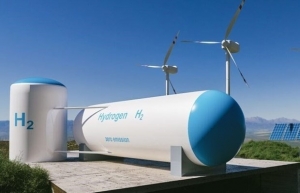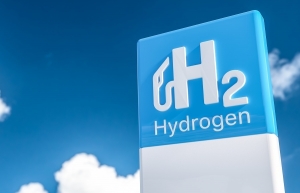Proactive steps to create green hydrogen economy
Although specific goals have been set for this potential new energy, Vietnam has many problems that need to be tackled.
 |
| Tran Thi Thuy Ngoc, Audit partner and Risk Advisory national leader, Deloitte Vietnam |
Southeast Asia is in the midst of a turning point and must take urgent and decisive climate actions to set out the economic picture over the next five decades. Uncontrolled climate change could cause Southeast Asia economic losses of approximately $28 trillion (in present value terms) by 2070.
However, the picture could shift from grey to green – as the rapid decarbonisation could yield economic gains of about $12.5 trillion by 2070.
Southeast Asia countries will face enormous challenges in the near future as they seek their way to transition into a low-emission pathway, especially with a long history associated with the fossil fuels region. On the other hand, from a positive point of view, these countries are starting to plan for a green transition to meet their low-emission targets.
Especially after COP27, emerging energy solutions including clean hydrogen are drawing massive attention. According to the latest study based on Deloitte’s Hydrogen Pathway Explorer model, clean hydrogen could diminish cumulative CO2 emissions by up to 85 gigatonnes by 2050, more than twice global CO2 emissions in 2021.
Clean hydrogen will be a special supporter in the decarbonisation process for hard-to-abate sectors that may not be able to electrify easily. By early 2023, more than 140 countries collectively (responsible for 88 per cent of global CO2 emissions) have adopted measures to achieve net-zero.
However, the collective production capacity of the world’s clean hydrogen projects announced will only reach 44 MtH2eq by 2030, a quarter of the demand. The demand for clean hydrogen is huge.
In addition, clean hydrogen transition could support up to 1.5 million jobs per year in developing and emerging economies between 2030 and 2050, and the market is expected to the value of the liquid natural gas trade by 2030, with a scale that will reach a growth of $1.4 trillion per year by 2050. In Southeast Asia, the clean hydrogen market scale is expected to rise nearly threefold within 20 years, from $51 billion in 2030 to $141 billion in 2050.
Keeping pace with the world’s movements, in July, Vietnam approved its energy master plan for the decade. Targets on green hydrogen have been set out in the national energy plan, specifically that green hydrogen production will reach to approximately 100,000-200,000 tonnes per year by 2030, expanding the scale to about 10-20 million tonnes per year by 2050.
Green hydrogen is one of the new energy sources that can help Vietnam solve its energy security problems in the context of depleted fossil fuels. Furthermore, production in Vietnam has the clear advantage that the output market for green hydrogen is available – which can be used for industries such as ammonia production, steel, fertiliser, chemicals, and petrochemical refining as a substitute for domestic grey hydrogen.
For example, by 2050, the estimated amount of green hydrogen needed for the steel industry and electricity generation is 9.5 million and 19.5 million tonnes, respectively.
In addition, green hydrogen also has opportunities to be exported to other foreign economies in the Asia-Pacific region. According to the Deloitte 2022 Power and Utilities Industry Survey, as green hydrogen is cost-competitive with conventional fuels, it will take more roles in the power and utility industry such as helping natural gas utilities decarbonise gas supplies, to fuel power generation, and as a way to “store” excess wind and solar output.
Unlike blue hydrogen, green hydrogen is produced by splitting hydrogen atoms from water molecules using electric currents. Thus, green hydrogen prices are not directly correlated with natural gas prices, providing a hedge against recent fluctuations in Europe and Asia.
Specific goals, international support, and the number of ready-to-launch projects can be considered a positive signal for the green hydrogen industry in Vietnam. However, these are only the first steps on the roadmap of green hydrogen production.
Besides the research on production, storage, and transportation, Vietnam also needs to quickly develop support policies specifically for clean hydrogen. This plays a vital role in helping ensure that early projects and pilots can compete on a fair-playing field, enter the market, and trigger economies of scale.
Along with laying the market foundation with new policies, there are other factors that need to be considered. Human and financial resources are also challenges for Vietnam in the energy transition process for green hydrogen.
The country needs to make necessary preparations for the training of high-skilled human resources and long-term financial resources to ensure an effective transition process and utilise competitive advantages.
The next step is to accelerate actions with clear targets, markets, and incentives for green hydrogen-based products.
The country must also ensure long-term sustainability, clear bottlenecks through value chain diversification with trade partners and raw material suppliers, and complete infrastructure for storage and transportation.
 | Conference held on green hydrogen development The first National Green Hydrogen Summit on energy transition and green hydrogen development in Vietnam on October 28 saw leaders, investors, and pioneers gather to discuss the future of green hydrogen. |
 | Vietnam hopes to promote energy transition from green hydrogen The green hydrogen ecosystem based on renewable energy is expected to contribute $40-$45 billion to Vietnam's GDP each year, according to the National Green Hydrogen Summit on October 28. |
 | Suitable policies, mechanisms needed for green hydrogen development Vietnam needs to promptly adopt appropriate policies and mechanisms to build infrastructure and value chains related to hydrogen, experts recommended at the National Green Hydrogen Summit: Energy Transition and Development of Green Hydrogen Industry in Vietnam on October 28 at the National Innovation Centre (NIC) at the Hanoi-based Hoa Lac Hi-tech Park. |
 | Green hydrogen market pursued Promoting a green hydrogen ecosystem has the potential to annually contribute over $40 billion to GDP and generate over 40,000 jobs for the Vietnamese economy. |
What the stars mean:
★ Poor ★ ★ Promising ★★★ Good ★★★★ Very good ★★★★★ Exceptional
Related Contents
Latest News
More News
- KK Group opens global flagship store in Ho Chi Minh City (January 19, 2026 | 11:52)
- Gia Lai draws over $1bn in new investment so far this year (January 19, 2026 | 11:50)
- Unlocking capital flows for strategic and suitable projects (January 18, 2026 | 09:00)
- ACV begins cargo terminal construction at Danang Airport (January 17, 2026 | 15:57)
- Viettel starts construction of semiconductor chip production plant (January 16, 2026 | 21:30)
- Bel expands Vietnam production with $19.7 million investment (January 16, 2026 | 16:07)
- ASML signals long-term commitment to Vietnam (January 16, 2026 | 12:00)
- Ho Chi Minh City starts construction of four key infrastructure projects (January 15, 2026 | 17:22)
- PIDG invests with AquaOne to expand Xuan Mai’s treated water supply to Hanoi (January 15, 2026 | 11:16)
- Vietnam ranks 38th in global AI adoption (January 14, 2026 | 16:01)

 Tag:
Tag:




















 Mobile Version
Mobile Version